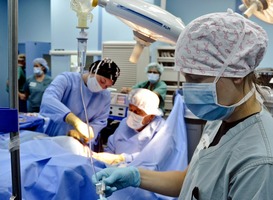Verstegen will investigate why bile duct cancer often does not respond to chemotherapy. It is possible that the tumor cells are protected by proteins that surround them like a shield and thus stop the chemotherapy.
Bile duct cancer is a type of liver cancer in which the tumor can arise both inside and outside the liver. In the Netherlands about 400 people are diagnosed with this disease every year.
Refractory to chemotherapy
Bile duct cancer is usually only discovered late, because complaints arise late that also do not appear to be serious. As a result, curative surgical treatment, including removal of the tumor, is often no longer possible. There is nothing left but palliative treatment with chemotherapy. Unfortunately, this is not very effective due to the insensitivity of the tumor to chemotherapy.
Among other things, the tumor appears to be protected against chemotherapy by a dense network of proteins (extracellular matrix cells, ECM) surrounding the cell. Also, cancer stem cells present in the tumor are often refractory to treatment. These stem cells receive signals from neighboring cells (fibroblasts), thus ensuring a continuous supply of new tumor cells.
3D kweek
Verstegen, together with partners Prof.dr. Gijsje Koenderink (TU Delft) and Dr Yvonne Vercoulen (UMCU), using 3-dimensional cell culture systems to study the response of bile duct tumors to chemotherapy. Verstegen: “New 3D cell culture techniques can partially mimic the tumor, but we cannot yet study interactions with other cells or tissue components. The composition of bile duct tumors is very complex. In addition to tumor cells, there are also other cell types such as fibroblasts, endothelial cells and immune cells. present.”
In addition, ECM proteins provide a very dense and rigid environment of the tumor. This tumor environment is known to play a major role in tumor development, progression and metastasis, as well as being an important factor in resistance to treatment. It is therefore of great importance to map these cells and study the interaction with each other and with the ECM proteins. This makes it possible to develop new treatments that influence the deposition and remodeling of ECM proteins.
Expected Outcomes
Ultimately, this new tumor model can be used to test possible treatment methods, for example specifically aimed at breaking down ECM proteins. Verstegen: “We want to switch off the shield around the tumor to get chemotherapy into the tumor. This is extremely important given the fact that at the moment only palliative treatment for bile duct cancer is possible and due to chemo-resistance these patients have a very poor prognosis. “
By: National Care Guide
–

